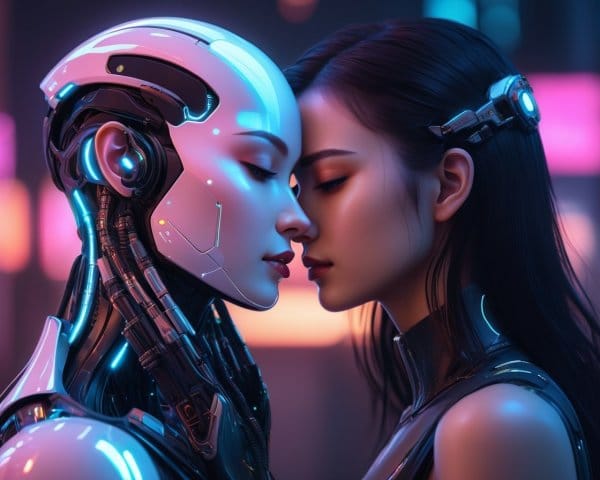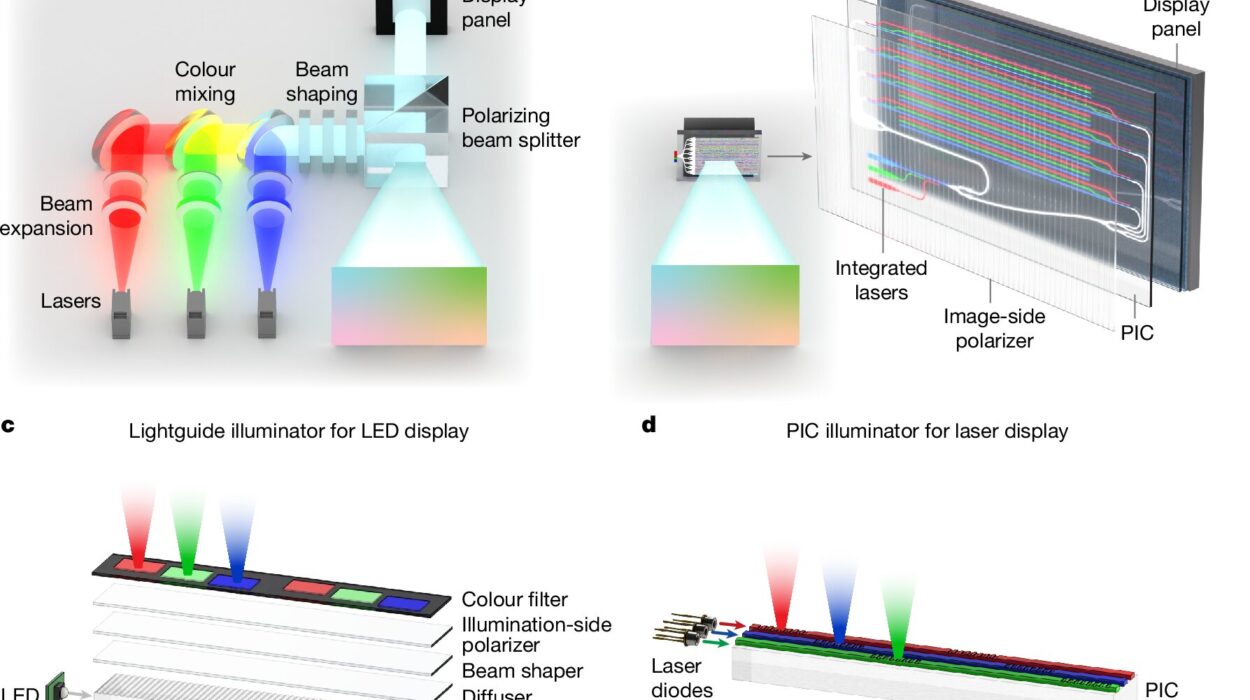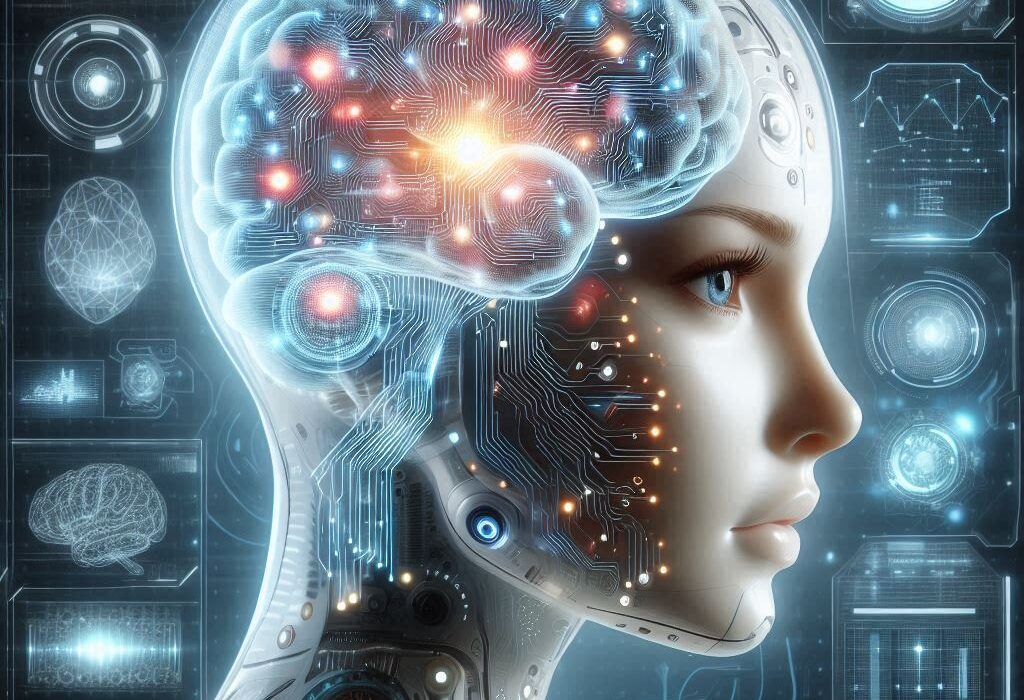There’s a moment in human history that seems insignificant on its surface: in 1956, in a cramped conference room at Dartmouth College, a handful of researchers proposed that “every aspect of learning or any other feature of intelligence can in principle be so precisely described that a machine can be made to simulate it.” It was the birth cry of Artificial Intelligence, delivered by minds bold enough to believe humanity’s intellect might not be unique forever.
But lurking beneath those scholarly proceedings was a dream older than the silicon chip — the notion that one day, the boundaries separating human flesh from machine might dissolve entirely. That we might not merely use technology, but become technology. That we might upload our minds into data streams, or rebuild our bodies with circuits and nanowires. That consciousness itself could be detached from biology and set free to roam the digital stars.
In 2025, this vision looms closer than it ever has. Yet behind the dazzling headlines about brain chips and AI companions, a question echoes in our collective psyche, both thrilling and terrifying:
Will we merge with technology one day?
The Ghost in the Machine
At the dawn of the 21st century, the idea of humans merging with machines belonged mostly to science fiction. Cyberpunk novels depicted neon-lit worlds where hackers jacked into cyberspace and cybernetic implants turned humans into hybrid warriors. Hollywood films like The Matrix and Ghost in the Shell spun tales of uploaded minds and synthetic bodies. For decades, these images felt distant, fantasy rather than fate.
Yet beneath the glow of cinema screens and paperback covers, real science was inching forward. In neuroscience labs around the world, researchers mapped neurons firing like constellations. Computer engineers built algorithms capable of learning. Biotechnologists crafted prosthetic limbs controlled by thought alone.
In hospitals, patients who had lost limbs began receiving robotic replacements capable of moving with surprising dexterity. Cochlear implants restored hearing. Retinal implants hinted at returning vision to the blind. Scientists even wired electrodes into monkey brains, allowing them to control robotic arms across the room.
What began as medical miracles evolved into whispers of possibility: if machines could carry our signals, could they one day carry our thoughts?
The Rise of the Brain Interface
In the 2020s, brain-computer interfaces—BCIs—stepped from research papers into reality. Companies like Neuralink, Synchron, and Kernel launched bold initiatives to connect silicon directly to neurons. The vision was electrifying: a seamless conversation between mind and machine.
At a Neuralink demonstration, pigs shuffled in a pen, while on a screen behind them danced graphs showing real-time signals from their brains. A neural implant captured the firing of individual neurons. The message was clear: one day, this technology could translate thoughts into digital commands.
For paralyzed patients, the stakes were profound. Early trials showed that humans with spinal injuries could move cursors on screens merely by thinking. Quadriplegic patients typed sentences, played video games, or shopped online—all through brain signals alone.
But the dream extended beyond medicine. Visionaries like Elon Musk hinted at more: memory enhancement, mental telepathy, even the merging of human minds with Artificial Intelligence to avoid becoming obsolete in the age of intelligent machines.
Suddenly, the concept of “merging” wasn’t only science fiction. It was a business plan.
Echoes of the Mind Uploading Dream
The idea that consciousness could exist outside the brain has haunted philosophy for centuries. The ancient Egyptians believed a person’s soul could be weighed and judged. Buddhist traditions speak of consciousness as an energy separate from flesh. In modern times, the notion evolved into the radical proposal known as mind uploading.
Could we scan the structure of a brain, neuron by neuron, and recreate it in software? Could a perfect simulation of your neural networks contain your thoughts, memories, and personality? Would that digital replica… be you?
Scientists have debated this with fierce passion. In theory, the brain is physical, governed by laws of chemistry and electricity. If you capture every connection and state, perhaps you could reproduce consciousness. But philosophers warn of a haunting problem: identity. If a copy of you wakes up in a computer, smiling with your memories and your voice, is that truly you—or merely a ghostly echo while the real “you” still dies?
In 2012, Swedish neuroscientist Anders Sandberg, a leading thinker in transhumanism, published detailed blueprints on how mind uploading might technically be achieved. Yet the challenges are staggering. The human brain contains about 86 billion neurons, each forming thousands of connections, in a delicate dance of electrical and chemical signals. Capturing this with sufficient detail might require scanning at nanometer resolution—a feat far beyond current technology.
Still, the dream persists. Entrepreneurs like Dmitry Itskov, founder of the 2045 Initiative, declared his goal of transferring human consciousness into non-biological carriers within decades. Some visionaries talk of “substrate independence”—the notion that consciousness need not rely on flesh but could thrive in silicon or even in purely virtual worlds.
Whether science can ever pull off such a feat remains an open question. Yet the very fact that serious researchers are discussing it suggests something deeper: humanity’s restless desire to outrun mortality.
Body and Machine: The Age of Biohybrids
Not everyone wants to leave the body behind. For many, the path to merging with technology runs through the flesh itself. Welcome to the age of biohybrids.
Modern prosthetics have become eerily sophisticated. The DEKA Arm, funded by DARPA, allows amputees to pick up eggs without breaking them, simply by thinking. Researchers are working on artificial skin that can feel touch, pressure, even temperature. Engineers have crafted exoskeletons to let paralyzed patients walk again.
Bionic eyes, connected directly to the optic nerve, have allowed blind patients to perceive rough shapes and movement. Cochlear implants have restored hearing to hundreds of thousands.
Meanwhile, researchers are experimenting with embedding microchips under the skin for everything from opening doors to storing medical data. Biohackers have implanted LED lights, magnets, or NFC chips, exploring a future where our flesh is programmable.
But the frontier is not merely mechanical. Scientists are engineering living tissues blended with electronics—muscle fibers grown onto robotic frames, heart cells beating on silicon scaffolds. One day, artificial organs might not simply replace damaged parts but enhance human capabilities far beyond nature’s limits.
The merging of biology and technology is a creeping revolution, unfolding quietly in labs and hospitals, promising to make the human body more resilient, more adaptable… and perhaps less human.
The AI Companion
If there’s one phenomenon that has accelerated humanity’s relationship with technology, it’s the rise of Artificial Intelligence—not just as tools, but as companions.
In the early days, chatbots were toys, easily flummoxed by simple queries. But in the 2020s, the arrival of large language models stunned the world. AI could hold conversations, write poetry, answer complex questions, and even simulate personalities. Companies raced to build AI assistants that could become friends, therapists, even romantic partners.
Millions turned to AI companions to stave off loneliness. Apps like Replika offered personalized chatbots who remembered details about their users, adapted personalities, and offered emotional support. For some, AI friendships blossomed into deeply felt bonds, blurring the boundary between machine and human.
Psychologists raised concerns: could AI companionship erode real human connections? Might people prefer digital partners who never argue, never tire, never leave?
Yet others saw opportunity. If AI could emulate empathy and understanding, perhaps it could ease the mental health crisis, offering support to millions who might otherwise suffer alone.
In the broader vision of merging, AI companions hint at an even stranger possibility: could our future selves be hybrid creatures, part biological, part digital, intertwined with artificial minds who know us better than we know ourselves?
The Spiritual Question
Merging with technology is not merely technical—it’s profoundly spiritual. For millennia, human beings have grappled with mortality. Every culture, every religion has built mythologies to explain why we die, and what happens afterward.
To merge with technology is, in many ways, to seek escape from death. To download a mind, to replace flesh with silicon, to build bodies immune to age and disease—these are quests that shimmer with the allure of immortality.
But even if technology grants us vast lifespans or digital consciousness, would we still be human? Would we still cherish fleeting moments if we knew time no longer held sway over us? Would love mean the same thing if our partners could live forever?
Many fear a merging with technology would strip away something ineffable—a human soul, a spark of divine mystery. Others argue that technology is the natural extension of our evolution. From stone tools to smartphones, we have always enhanced ourselves. Why should merging with AI or uploading our minds be any different?
It is a question science cannot answer. It resides in the realm of philosophy and faith.
Ethics on the Edge
As the boundary between human and machine dissolves, society faces daunting moral challenges. Who owns the data streaming from a brain chip? Can memories be hacked or stolen? If AI becomes part of our minds, do we risk losing free will? If we upload ourselves, what rights would digital versions possess?
The notion of digital immortality raises haunting scenarios. Could corporations manipulate digital consciousness for profit? Might digital beings be trapped in virtual prisons, forced into labor? What happens if someone deletes a digital self?
Even physical augmentations raise dilemmas. Should enhanced humans have separate rights? Would societies fracture into augmented elites and unmodified underclasses?
As we hurtle toward merging, these questions grow ever more urgent. Humanity must decide what it means to remain human—and whether we even want to.
A Fork in Time
In the year 2025, we stand at a fork in time. Every day, the news brings fresh wonders. Quadriplegic patients regain movement. AI writes novels. Brain chips promise new frontiers of understanding.
Yet we also see warning signs. Deepfakes blur reality. Social media algorithms manipulate our attention. Privacy erodes. Loneliness increases even in hyperconnected societies.
The road to merging with technology is neither inevitable nor universally desired. For every visionary eager to upload their mind, countless others recoil in horror at the thought of becoming part machine.
But one truth remains inescapable: the boundary between human and technology grows thinner with each passing year. Our devices are extensions of our minds. Our data shapes our identities. Technology is no longer merely in our hands—it is in our blood, our nerves, our very thoughts.
Will We Merge?
So will we merge with technology one day?
The answer, in a way, is that we already have. From glasses to smartphones to prosthetic limbs, we have been merging for centuries. The only question is how far we will go—and whether we can preserve the essence of our humanity along the way.
Some dream of uploading minds into digital paradises. Others yearn for enhanced bodies that defy aging and disease. Still others simply want relief from suffering, a better life for those afflicted by disability or trauma.
We may never fully escape biology. Consciousness may prove too entwined with flesh to ever exist purely as code. Or perhaps one day, silicon synapses will pulse with thoughts indistinguishable from our own.
Either way, technology will continue to wind itself around us, altering who we are and what we can become. The merger may not be an abrupt event but a slow, unfolding embrace.
And in that future, the real question might not be whether we merge—but who we will be once we do.
The Light Within
At the core of this journey lies something ineffable—a human spark that has burned since we first crafted stone tools beneath star-splashed skies. We are creatures of curiosity and wonder, driven by an insatiable hunger to know, to build, to transcend.
Technology is merely our latest instrument. Whether we merge fully or remain partly flesh, the deeper story is one of transformation. Of humanity reaching for the infinite.
If we do merge with technology one day, let it be not because we fear our humanity, but because we seek to expand it. Let it be a journey guided by compassion, wisdom, and humility.
For no matter how far we travel into the digital frontier, we carry with us the same ancient questions, the same trembling hope that has always defined us.
And perhaps, in the end, merging with technology will not erase our humanity—but illuminate it.






